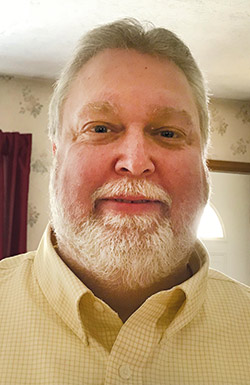Working in the restaurant industry from the ground up for more than two decades has served Scott Ellerhorst well in his sales, design and consulting career in C&T Design and Equipment Co.’s Cincinnati office. “I started in high school bussing tables at restaurants, moved up to washing dishes and eventually became a general manager,” he says.
 Scott Ellerhorst,Sales, Design, Consultant C&T Design and Equipment Co., CincinnatiThis took Ellerhorst from northern Indiana to Washington, D.C., to Atlanta and North Carolina; but he longed to return to his hometown of Cincinnati. “I was looking for a job back in Ohio, where I’m from, and thinking I wanted a change from the long hours and time-consuming restaurant career,” he says.
Scott Ellerhorst,Sales, Design, Consultant C&T Design and Equipment Co., CincinnatiThis took Ellerhorst from northern Indiana to Washington, D.C., to Atlanta and North Carolina; but he longed to return to his hometown of Cincinnati. “I was looking for a job back in Ohio, where I’m from, and thinking I wanted a change from the long hours and time-consuming restaurant career,” he says.
After answering an ad for a position at C&T, Ellerhorst was hired, and 11 years later says he “got lucky” finding a great company to work for.
FE&S: You worked in operations and as a chef for years before becoming a DSR. How does this experience shape your approach?
SE: It helps me understand what operators are trying to accomplish and gives me good insight on how things operate in the kitchen. My background also gives me the knowledge in how to lay out kitchens to help with the flow and what equipment is best to use.
FE&S: What are the key traits of a well-designed foodservice operation?
SE: I deal mainly with kitchens and cook’s lines, that’s where my experience was based, so efficiency is important. Getting the right pieces of equipment in good proximity to other equipment and the appropriate refrigeration by where food is being cooked is important. My goal is to shorten the chef’s steps, so they’re basically in one place, and they don’t have to walk up and down the line to complete an entree.
FE&S: What goes into developing a good equipment specification?
SE: The most important thing is feedback from my clients, especially those with whom I work on multiple projects. Finding out how equipment works for them, and if they’re looking for something different, is key. Everyone is unique in what they need and like.
FE&S: How do you go about tracking all the details while simultaneously managing multiple projects?
SE: Good support from my office helps a great deal. It’s about having the right people assisting in tracking orders and managing projects. With myself, it’s about saving everything, every email and all correspondence. I like texting for immediate answers but prefer to follow up with an email to reiterate what has been said and is expected. The other thing I do is try to visit every site multiple times. One of the things general contractors appreciate is that I go out before walls are closed in with the electrician and plumber and make sure everything is correct. Every project has changes.
FE&S: How has foodservice equipment changed in recent years?
SE: There seems to be more options and range in quality. When I started cooking, you either had the high end or the basic units. Now there are more mid-quality equipment options. These give owners the chance to open their restaurant with quality equipment, but not necessarily those with the high price tag of top-of-the-line names.



